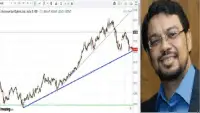Description
The goal of this course is to provide you with the knowledge needed to comprehend a company's financial statements and understand the various transactions that occur in the stock market so that you can replicate the strategies discovered by existing academic literature. You will learn how to obtain information about a company's performance and use it to develop trading strategies. Following that, you will be taught basic asset pricing theories so that you can calculate the expected returns of a stock or a portfolio. Finally, you will be introduced to the actual functioning of asset markets, the different types of market participants, different types of orders and the most efficient and appropriate time to execute them, trading costs and ways to minimise them, the concept of liquidity, and so on. This knowledge is required in order to create efficient algorithms for executing various trading strategies.
Syllabus :
1. Basics of Financial Statements
- Introduction to accounting
- The balance sheet
- Assets
- Liabilities
- Shareholders’ Equity
- Income Statement
- Statement of Cash Flows
- Cash Flows from Operations
- Cash Flows from Investments and Financing
2. Financial Statement Analysis
- Profitability ratios
- Activity Ratios
- Solvency and Liquidity Ratios
- DuPont Identity
3. Asset pricing theories
- Expected returns and risk
- Diversification
- CAPM
- CAPM Beta
- Multifactor Models
- APT
- Arbitrage
- Arbitrage-Free Price
- Risk Factors
4. Basics of Market Microstructure
- Market and Limit Orders
- Limit Order Book
- More Limit Order Book
- Limit Price Placement
- Stop-Loss Orders
- Short-Selling
- Other Order Instructions
- Liquidity
- Transaction Costs
- Implicit Transaction Costs
- Implementation Shortfall









